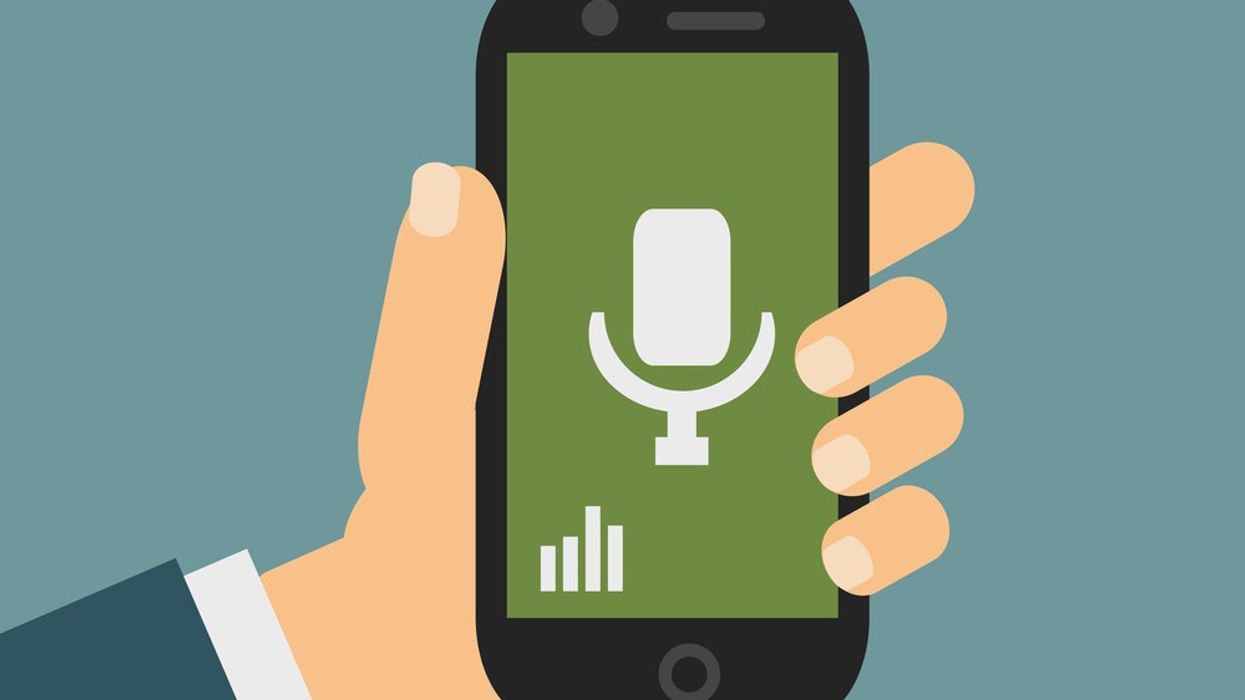Get Your Ideas Out: 6 Steps Every Filmmaker Should Take to Use Dictation
With new (and free) software, it's easier and more accurate than ever to speak your story. But what does dictation have to offer a screenwriter?

The lineage of oral storytelling is a proud and long one, stretching back into the mists of history. Epic tales like The Iliad and The Odyssey were originally told around the fire late at night, only to be written down hundreds of years later. In the 17th century, blind poet John Milton dictated his epic, Paradise Lost, to his daughters, though he claimed he was taking dictation from God. And Russian novelist Fyodor Dostoevsky, under the gun to complete his book The Gambler, hired a dictationist, whom he later married.
Dictation also brought many women into the workforce; as typewriters began to be mass-produced in the late 19th century, women were hired in a professional capacity to take dictation. The operators of these machines were referred to as "typewriters," so new was the technology (to say nothing of women's place in society at the time).
So, what can dictation do for you? We break it down below.
Step 1: Get the apps
Until as recently as 20 years ago, dictation was more science fiction that fact. Today, dictation software is available with an accuracy rate of over 90%. There are even free ways to dictate your work: both OS X and Windows have native dictation functions.
Neither of the above native services, in my experience, compares to Nuance's Dragon software, with versions for the Mac and PC. (There are already editions of Dragon for the legal and medical professions; these can cost upwards of $2,000 because they have to recognize whole languages worth of arcane terminology.) You, the average screenwriter, will either need Dragon for Mac or Dragon NaturallySpeaking Premium.
Google Docs has also recently introduced a version of dictation. It's roughly equivalent to the free version available with OSX.
Step 2: Computer transfer
Regardless of which platform you choose to employ, you'll also need some way to get your words into the computer. This can be accomplished using any microphone, even the one on the standard Apple EarPods; for true accuracy, though, you'll probably want to get a USB mic. I used an old Blue Snowball Mic, and there are a variety of voice recognition headsets recommended for use when dictating. Most of these are wired, and most are USB.
This doesn't limit you to your desk, though. iOS and Android both have mobile dictation apps, and, of course, Siri is always your faithful companion.
Step 3: How to use it
With any voice recognition technology on the market today, the concept is relatively simple: you speak, and the program turns your voice into words that appear on the screen. Then, using other commands, you can correct and edit what you've typed (we'll get to that in a second.).
While you're typing, you have the option to punctuate precisely as you go along. Take this sentence: Bob, who has the flu, missed out on the party. Everyone was sad.
The software picks up on your idiosyncrasies and learns your cadence.
Speaking that out, I would say, "(open quotes) Bob (comma) who has the flu (comma) missed out on the party (period). Everyone was sad (period) (close quotes)." And if I messed up, I'd have to correct myself using one of the many commands native to most of the software. This may sound like an uncomfortable process{C}{C}—and it is, at least at first. Depending on your learning curve, it might take several days to get up to speed, and you might find that punctuating slows you down; in that case, dictating a quasi-stream-of-consciousness text is equally feasible. (Just know you'll have to go back later to put the punctuation in.)
Step 4: What to say
According to most authorities on the subject, adding dictation to your writing practice is not something you want to do overnight. Speaking from experience over the past few weeks, I can say that this is true. Blogger and author Monica Leonelle recommends starting small, with a blog post, email, or social media update. Or you can use your phone's native ability to dictate a text, run a Google search, or do some other mundane task.
It should also be noted that an added benefit of dictation software is that it can control your computer; this software is frequently used by people who are unable, for whatever reason, to operate a traditional keyboard and mouse, and so need to control their computers with their voices. At the beginning, however, this can have the effect of detracting from your writing time, and is perhaps best avoided.
Step 5: How to say it
A key component of this whole concept is that you have to, for lack of a better term, train your dragon. The software demands that you set up a profile for yourself, using one microphone per profile, and using only your voice. You can upload text you've written, and as you speak, the software picks up on your idiosyncrasies and learns your cadence.
It's also possible to upload sample documents to the software so that it learns your eccentricities from text, and will add foreign words to its lexicon. And though it will suggest reading out a block of text to learn your voice, author Scott Baker doesn't recommend doing so:
"Instead, feed Dragon a few of your own stories you have written. This is a far better way of training the program using a quick and dirty method to [acclimate] the software to your writing style. From this point on, you will be dictating your own writing to the program anyway and, if all goes as intended, your accuracy should increase. The more you talk to Dragon, the more it learns not just how you speak but how you write."
In a similar vein, when implementing dictation into your daily writing routine, I've found that it's far more productive to work on rough drafts, outlines, or anything where a margin for typographical error is not that important. What's more important is getting your ideas out of your head. By using the mobile features of this software, you'll find that you can write almost anywhere. Because Dragon features transcription features, too, you'll have the option to record yourself on a separate device, then later upload the file to your computer for transcription into text.
"The more you talk...the more it learns not just how you speak, but how you write."
Though it is compatible with Movie Magic Screenwriter, Dragon (and Windows and OS X) can be used to write screenplays.
Step 6: Just do it
The benefits of dictation are indisputable (provided you can get used to it— some people, kinesthetic learners chief among them, might find it difficult to get into the habit of dictating their stories). The practice allows you to write up to 3,000 words an hour.
I own a manual typewriter and a turntable. I also use a computer several hours every day; there's no harm in using dictation software if it fits into your routine. Anything to get words on paper is a good thing, after all.
I've found that one way to get into the habit of writing, if you're working on a screenplay, for example, is to tell the story out loud. Tell it as though you were telling it your best friend, a stranger in a coffee shop, or, if you want to be hard on yourself, a producer. Your idle chatter might lead to a revelation.
Top article photo credit: Igor Samoilik / Shutterstock














